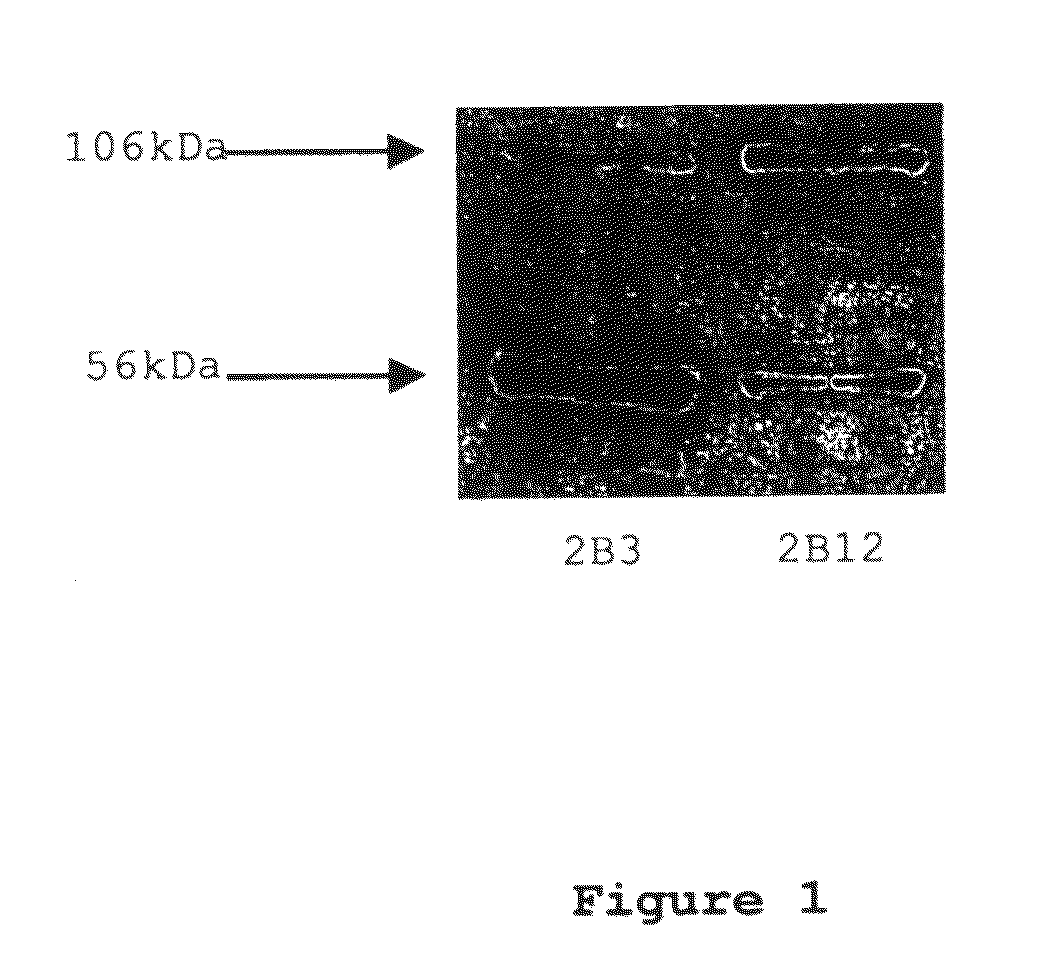Monoclonal antibody for APP
a monoclonal antibody and app technology, applied in the field of polypeptides, can solve the problems of no current licensed treatment for mild ad is available, and high risk of ad, so as to reduce the accumulation or release of -amyloid
- Summary
- Abstract
- Description
- Claims
- Application Information
AI Technical Summary
Benefits of technology
Problems solved by technology
Method used
Image
Examples
Embodiment Construction
Materials and Methods
Immunisation Procedures
[0049]Monoclonal antibodies were raised against an immunogenic peptide (EEISEVKMDAEFRHD; SEQ ID NO: 3), termed Ka, which represented the amino acid sequence spanning the β-secretase cleavage site in human APP. The peptide was synthesised using a poly-lysine, multiple antigenic peptide (MAP) core and then used to immunise female Balb / c mice (20-25 g). All experiments on mice were performed in accordance with the Animals (Scientific Procedures) Act 1986 administered by the U.K. Government Home Office and with ethical approval from Cardiff University. Mice were immunized and hybridomas were generated by standard methods as first developed by Kohler and Milstein (1975) and detailed elsewhere, including Liddell and Cryer (1991). The hybridoma supernatants were screened for high-affinity MAbs by indirect ELISA using the immunising peptide, prior to more complete cross-reactivity screenings. The 2B3 and 2B 12 clones were chosen for further screen...
PUM
| Property | Measurement | Unit |
|---|---|---|
| pH | aaaaa | aaaaa |
| pH | aaaaa | aaaaa |
| pH | aaaaa | aaaaa |
Abstract
Description
Claims
Application Information
 Login to View More
Login to View More - R&D
- Intellectual Property
- Life Sciences
- Materials
- Tech Scout
- Unparalleled Data Quality
- Higher Quality Content
- 60% Fewer Hallucinations
Browse by: Latest US Patents, China's latest patents, Technical Efficacy Thesaurus, Application Domain, Technology Topic, Popular Technical Reports.
© 2025 PatSnap. All rights reserved.Legal|Privacy policy|Modern Slavery Act Transparency Statement|Sitemap|About US| Contact US: help@patsnap.com



